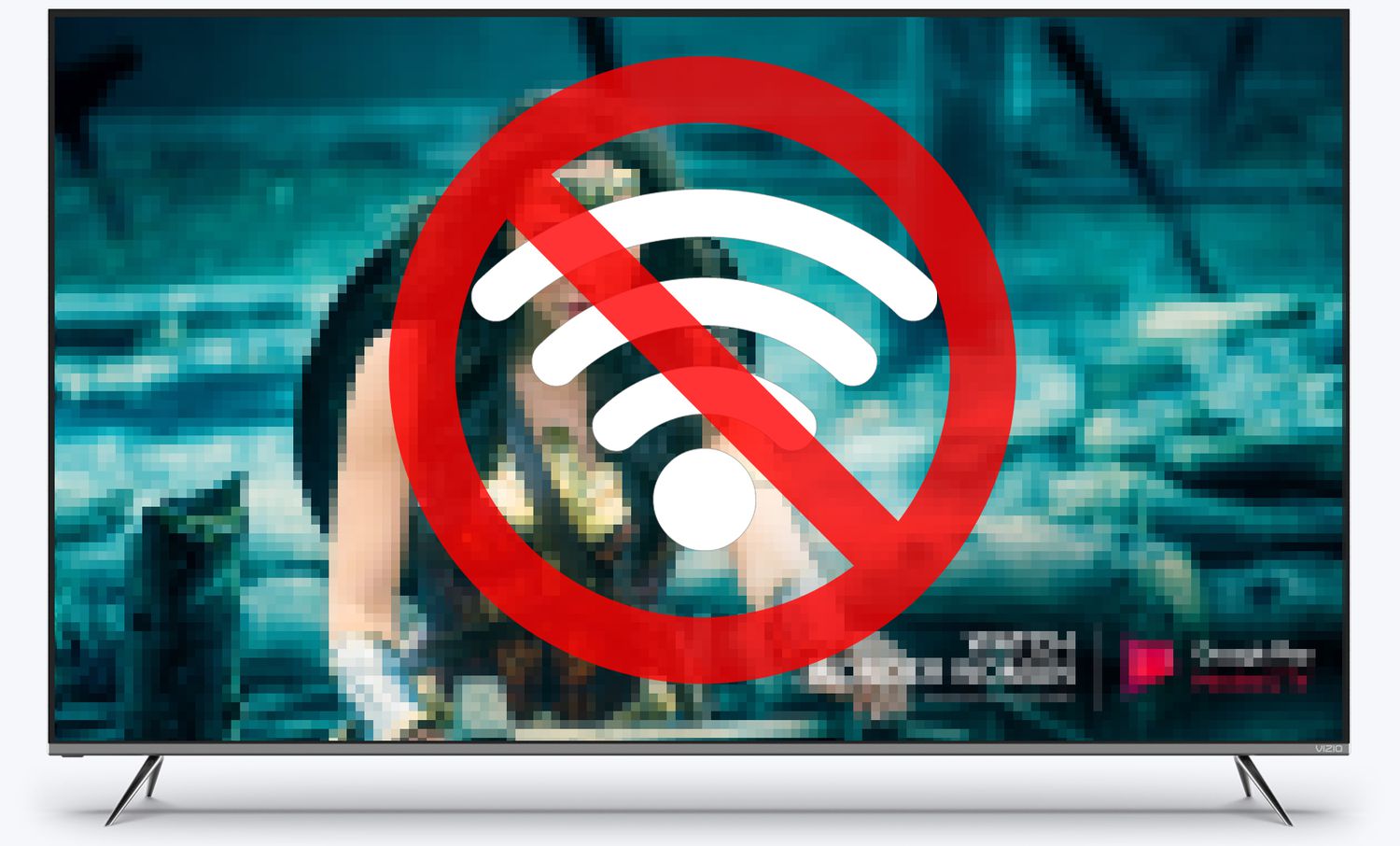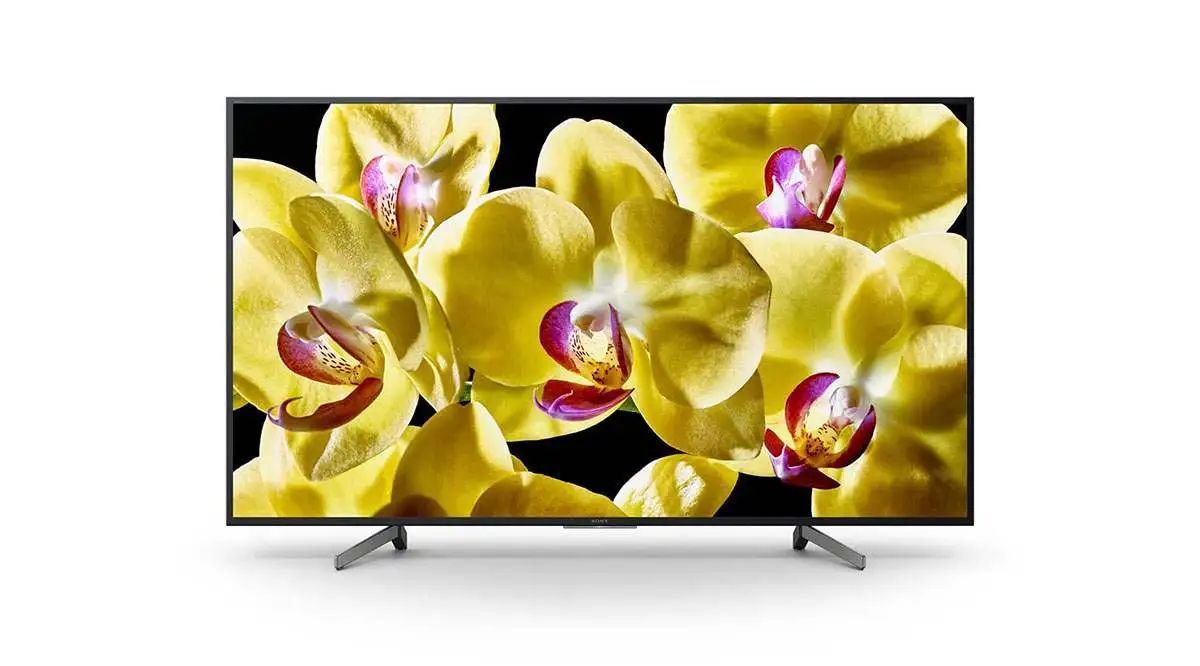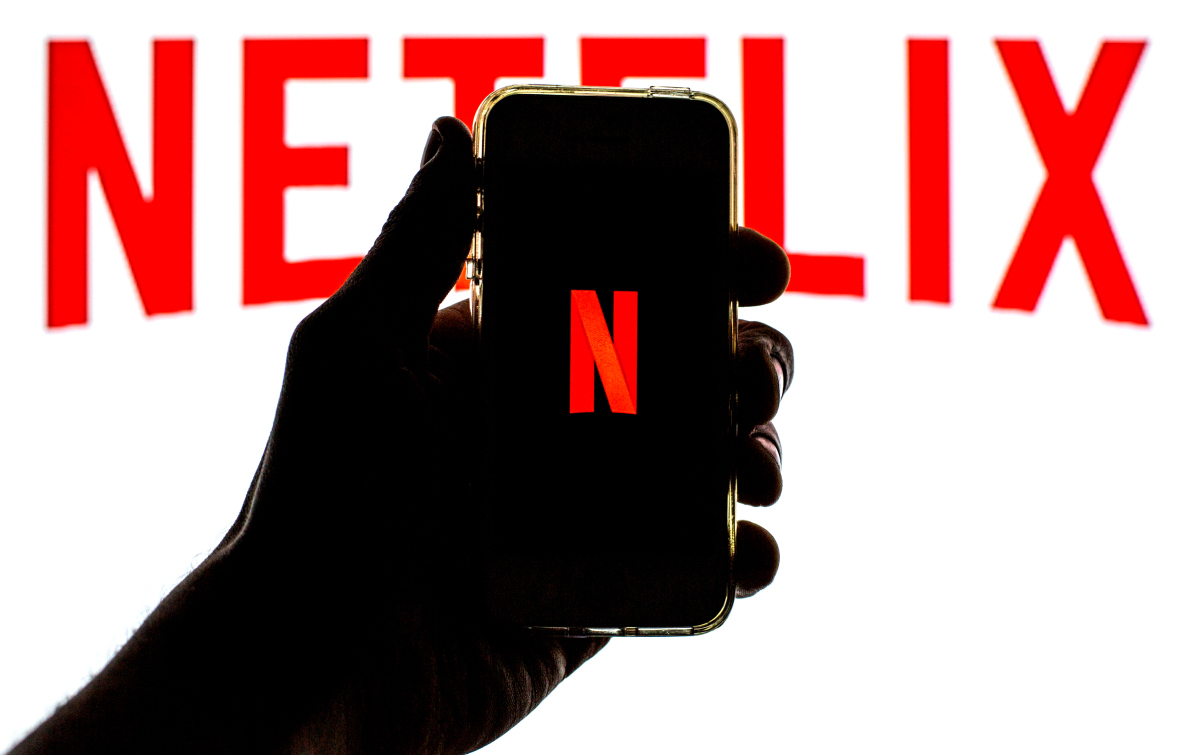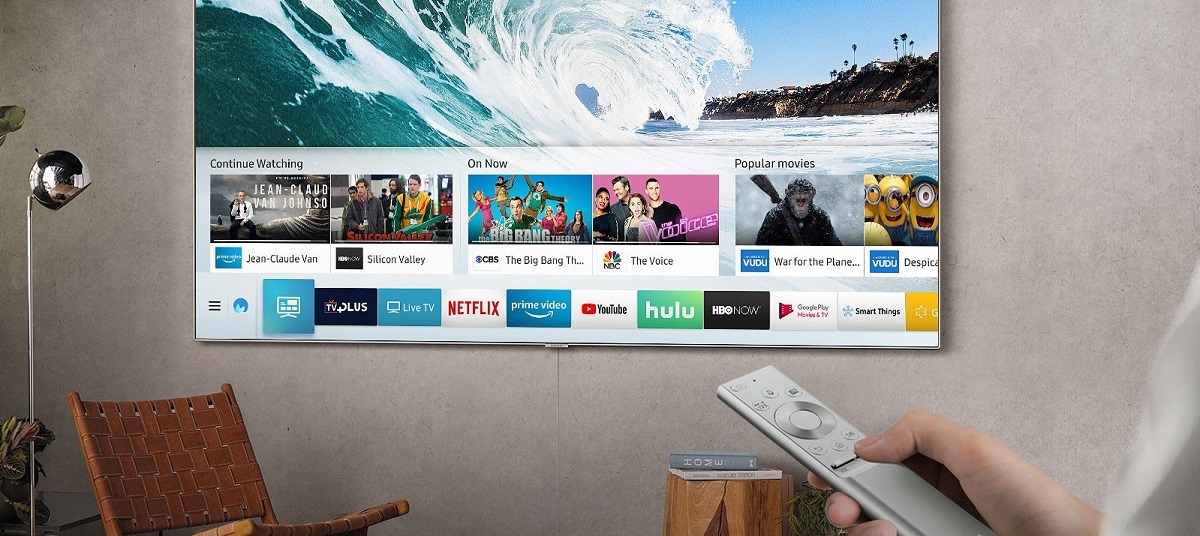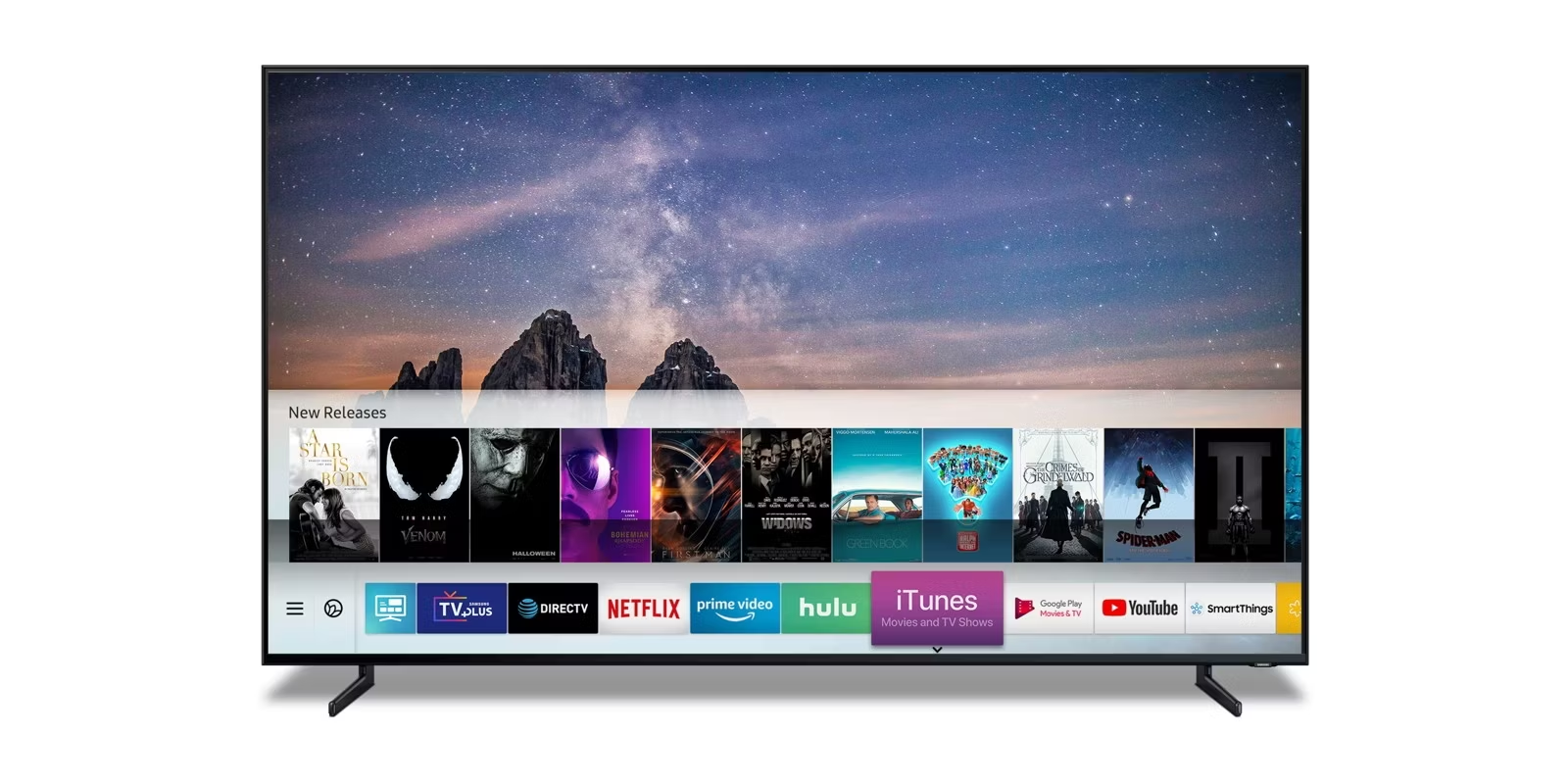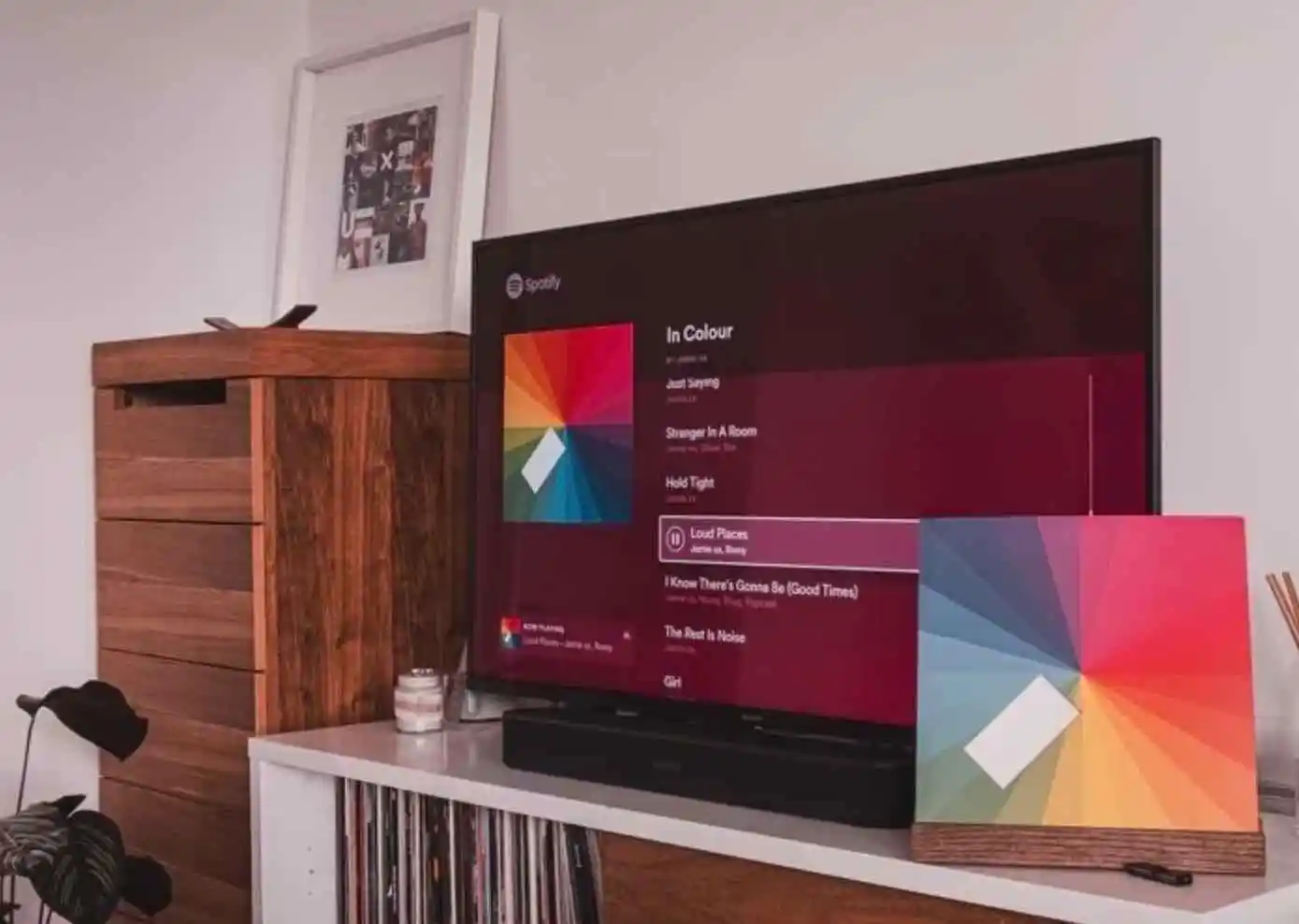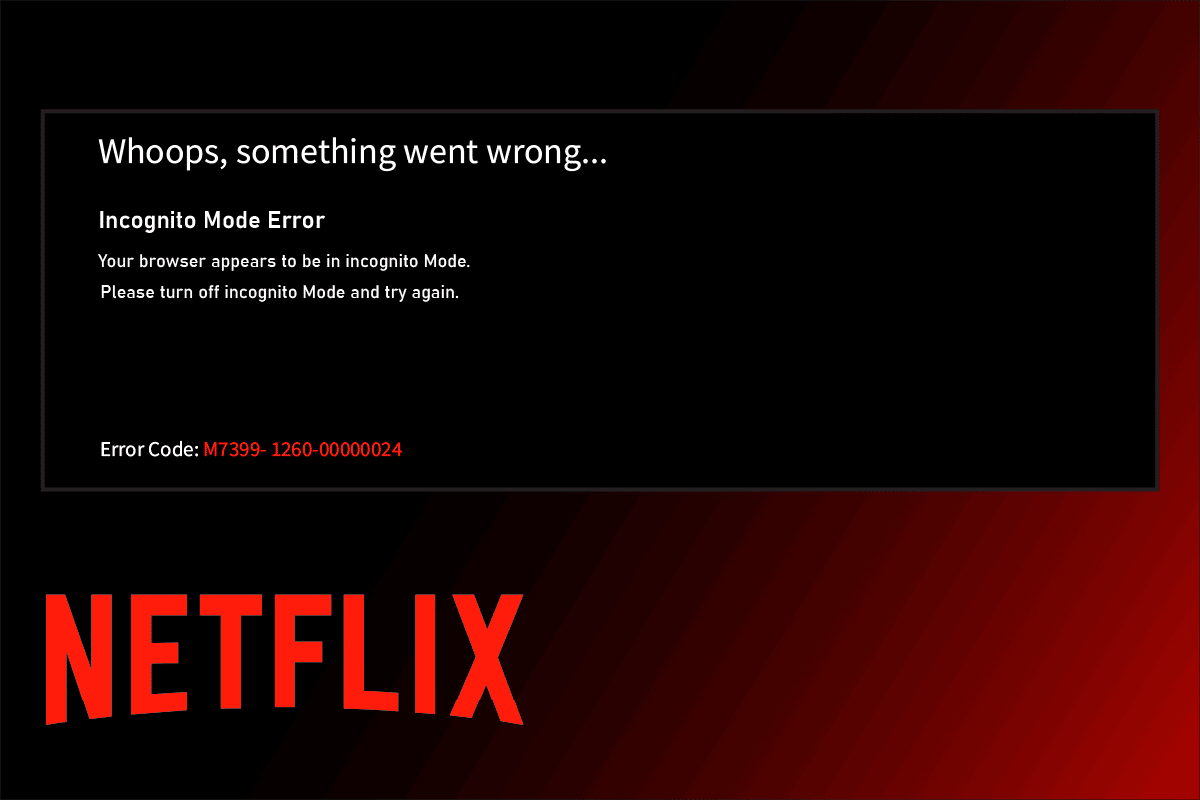Common Issues with Connecting a Smart TV to the Internet
Connecting a Smart TV to the internet allows you to access a world of online content, streaming services, and apps right from the comfort of your living room. However, it’s not uncommon to face challenges when trying to establish a stable and reliable internet connection for your Smart TV. In this section, we will explore several common issues that may arise and provide potential solutions to help you troubleshoot and resolve them.
-
Weak Wi-Fi Signal
A weak Wi-Fi signal can significantly impact your Smart TV’s ability to connect to the internet. Make sure your TV is within range of your Wi-Fi router and try moving the router to a more central location in your home. Additionally, eliminate physical barriers and sources of interference, such as walls, electronic devices, and appliances, that may disrupt the signal.
-
Incorrect Wi-Fi Network Password
Double-check that you are entering the correct Wi-Fi network password when connecting your Smart TV. A single incorrect character can prevent the connection. If you’re unsure of the password, check with your internet service provider or refer to your router’s documentation.
-
Compatibility Issues with Wi-Fi Network
Some Smart TVs may not be compatible with certain Wi-Fi networks, particularly older routers or networks using outdated security protocols. Ensure that your router supports the Wi-Fi standards and encryption protocols required by your Smart TV. If necessary, consider upgrading your router or adjusting its settings.
-
Outdated TV Software
Outdated software on your Smart TV can lead to compatibility issues and connectivity problems. Check for firmware updates for your specific TV model on the manufacturer’s website. Follow the instructions to download and install any available updates to ensure optimal performance and compatibility.
-
Network Connection Problems
Occasionally, network connection issues may arise due to temporary outages, maintenance, or other network-related problems. Check if other devices in your home are experiencing internet connectivity issues. If so, contact your internet service provider to determine if there is a larger problem affecting your area.
-
Firmware Update Required
Certain Smart TVs may require firmware updates to establish a stable internet connection. Navigate to the settings or system menu on your TV and look for the option to update the firmware. Follow the prompts to initiate the update if available.
-
Router Configuration Issues
Incorrect router settings can interfere with your Smart TV’s ability to connect to the internet. Verify that your router’s settings, such as network name (SSID) and security settings, match the information entered on your TV. Refer to your router’s user manual or contact your internet service provider for assistance with router configuration.
-
MAC Address Filtering
MAC address filtering is a security feature that can inadvertently block your Smart TV from accessing the internet. Ensure that your TV’s MAC address is added to the allowed devices list in your router’s settings. This will grant your TV permission to connect to the network.
-
DNS Server Problems
Issues with the DNS (Domain Name System) server settings can affect your Smart TV’s ability to resolve website addresses and establish an internet connection. Try changing your TV’s DNS settings to a public DNS server like Google DNS (8.8.8.8 and 8.8.4.4) or OpenDNS (208.67.222.222 and 208.67.220.220).
-
IP Address Conflict
An IP address conflict can occur when multiple devices on the same network have the same IP address. To resolve this issue, access your router’s settings and enable DHCP (Dynamic Host Configuration Protocol), which will automatically assign unique IP addresses to each connected device.
-
Firewall and Security Software Settings
Firewall and security software on your computer or router can sometimes restrict your Smart TV’s access to the internet. Temporarily disable any firewall or security software and check if the TV can establish a connection. If it does, adjust the settings accordingly to allow the TV to access the network.
-
Insufficient Bandwidth
Insufficient bandwidth can cause buffering, slow loading times, and interrupted streaming on your Smart TV. Check your internet plan and ensure that it provides sufficient speed to support your streaming needs. Consider upgrading your plan if necessary or limit bandwidth usage on other devices while using your Smart TV.
-
Faulty Network Cable
If you’re using a wired connection, a faulty network cable can prevent your Smart TV from connecting to the internet. Try using a different Ethernet cable or test the cable on another device to identify if it’s the source of the problem.
-
Internet Service Provider (ISP) Issues
Occasionally, connectivity issues may be related to problems with your internet service provider. Contact your ISP to check if there are any known issues or outages in your area. They may be able to provide further assistance or identify any issues with your account or connection.
-
Smart TV Hardware Problems
In rare cases, connectivity problems could be attributed to hardware issues with your Smart TV. If you’ve exhausted all troubleshooting options and are still unable to establish a connection, consider contacting the manufacturer’s customer support for further assistance.
Weak Wi-Fi Signal
A weak Wi-Fi signal can be a frustrating issue when trying to connect your Smart TV to the internet. There are several factors that can contribute to a weak signal, such as distance from the router, physical barriers, or interference from other devices. Here are some steps you can take to improve your Wi-Fi signal:
-
Check the Placement of Your Router
The location of your Wi-Fi router plays a crucial role in signal strength. Ensure that your router is centrally positioned in your home, as this will help distribute the signal more evenly throughout the space. Avoid placing the router near walls, furniture, or other objects that can obstruct the signal.
-
Eliminate Physical Barriers
Physical barriers, such as walls and floors, can significantly weaken your Wi-Fi signal. If possible, try to minimize the number of obstacles between your router and your Smart TV. In cases where you’re unable to relocate your router, consider using Wi-Fi extenders or a mesh network system to extend the signal’s reach to different areas of your home.
-
Reduce Interference
Other electronic devices can interfere with your Wi-Fi signal, causing it to weaken or drop entirely. Keep your router away from devices like cordless phones, baby monitors, microwave ovens, and Bluetooth devices, as they can disrupt the wireless signal. If you’re experiencing interference, try turning off or relocating these devices.
-
Change Wi-Fi Channel
Wi-Fi routers operate on different channels, and neighboring routers operating on the same channel can interfere with each other. Use a Wi-Fi analyzer app to identify the least congested channel in your area and manually change your router’s channel settings. This can help improve the Wi-Fi signal reception on your Smart TV.
-
Upgrade Your Router
If you’ve tried all the above steps and still have a weak Wi-Fi signal, it may be time to upgrade your router. Older routers may not provide the same range and performance as newer models. Consider investing in a dual-band or tri-band router with better coverage and faster speeds.
By following these steps, you should be able to boost your Wi-Fi signal and improve the connectivity of your Smart TV. Remember to periodically check the signal strength on your TV and make adjustments as needed to ensure a seamless streaming experience.
Incorrect Wi-Fi Network Password
An incorrect Wi-Fi network password is a common issue that can prevent your Smart TV from connecting to the internet. Even a single incorrect character in the password can result in a failed connection attempt. Here are some steps you can take to ensure you’re entering the correct Wi-Fi network password:
-
Double-Check the Password
Before entering the password on your Smart TV, take a moment to double-check it. Ensure that you’ve entered all the characters correctly, paying attention to uppercase and lowercase letters as well as any special characters. It’s easy to make mistakes when typing complex passwords, so take your time to avoid errors.
-
Refer to Your Router’s Documentation
If you’re not sure about the Wi-Fi network password, you can find it in your router’s documentation or manual. Look for the section that provides information about the default Wi-Fi network name (SSID) and password. Keep in mind that some routers may have a unique default password that you need to change during the initial setup process.
-
Contact Your Internet Service Provider
If you still can’t find the correct Wi-Fi password, reach out to your internet service provider (ISP). They should be able to provide you with the necessary information, including the correct password for your Wi-Fi network. You may need to verify your account details or provide your router’s serial number for security purposes.
-
Reset Your Router
In some cases, you may need to reset your router to its factory settings. This process will restore the router to its default configuration, including the default Wi-Fi network name and password. Keep in mind that resetting your router will disconnect all connected devices, so be prepared to set up your network again and reconnect your devices.
-
Set a New Password
If you have confirmed that you are entering the correct Wi-Fi network password and are still unable to connect your Smart TV, it’s possible that the password has been changed without your knowledge. In this case, access your router’s settings and update the Wi-Fi network password. Be sure to choose a strong password that is easy for you to remember and difficult for others to guess.
By following these steps, you should be able to determine the correct Wi-Fi network password and successfully connect your Smart TV to the internet. Remember to keep your Wi-Fi password secure to prevent unauthorized access to your network.
Compatibility Issues with Wi-Fi Network
Compatibility issues between your Smart TV and your Wi-Fi network can arise when your TV is not compatible with certain Wi-Fi standards or security protocols. Here are some common compatibility issues and the steps you can take to resolve them:
-
Check Wi-Fi Standards
Ensure that your Smart TV supports the Wi-Fi standards used by your router. The most common Wi-Fi standards are 802.11n, 802.11ac, and 802.11ax. If your TV does not support the same standard as your router, you may experience connectivity issues. Consider upgrading your router or contacting your Smart TV manufacturer for any potential firmware updates that may improve compatibility.
-
Security Protocol Compatibility
Compatibility issues can also arise due to different security protocols used by your Smart TV and your Wi-Fi network. The most common security protocols are WEP, WPA, and WPA2. Verify the security protocol used by your router and make sure that your Smart TV supports the same protocol. If not, update your router’s security settings to a compatible protocol or consider upgrading your Smart TV.
-
Hidden SSID
Some Smart TVs might have difficulty connecting to Wi-Fi networks with hidden SSID (network name). If your Wi-Fi network is set to hidden, try broadcasting the SSID temporarily and connecting your Smart TV. Once the connection is established, you can revert to hiding the SSID if desired.
-
Router Firmware Update
Occasionally, compatibility issues can be resolved by updating your router’s firmware. Manufacturers release firmware updates to improve compatibility with various devices, including Smart TVs. Check your router manufacturer’s website for any available firmware updates and follow the instructions provided to update your router’s firmware.
-
Router Settings Adjustment
Adjusting certain settings on your router might help resolve compatibility issues. For example, adjusting the channel width or enabling compatibility mode can improve connectivity with certain devices. Refer to your router’s user manual or contact the manufacturer for guidance on adjusting settings that could resolve compatibility issues.
-
Router Upgrade
If all else fails, consider upgrading your router to a newer model that offers better compatibility with a wider range of devices. Look for routers that are known for their compatibility with Smart TVs and support the latest Wi-Fi standards. Upgrading your router can improve overall network performance and enhance compatibility with your Smart TV.
By following these steps, you can tackle compatibility issues between your Smart TV and your Wi-Fi network. Remember to consult your Smart TV’s user manual and reach out to your router manufacturer or Smart TV manufacturer’s customer support for specific guidance tailored to your devices.
Outdated TV Software
Outdated software on your Smart TV can lead to compatibility issues and connectivity problems when trying to connect it to the internet. Manufacturers often release software updates to improve the performance, security, and compatibility of their devices. If your Smart TV has outdated software, here are some steps to consider:
-
Check for Firmware Updates
Start by checking if there are any available firmware updates for your specific Smart TV model. Manufacturers typically provide firmware updates either through their website or directly on the TV itself. Navigate to the settings menu of your Smart TV and look for a section related to software updates. Follow the instructions to download and install any available updates.
-
Automatic Updates
In some cases, you can enable automatic software updates on your Smart TV. This setting allows your TV to check for and install updates automatically. It ensures that your TV’s software remains up to date without requiring manual intervention. Look for this option in the settings menu of your Smart TV and enable it if available.
-
Factory Reset
If your Smart TV is significantly outdated and multiple software updates are available, you might encounter issues during the update process. In such cases, performing a factory reset on your Smart TV can help. This process will restore your TV’s software to the original state and clear any potential conflicts. After performing the factory reset, you can initiate the software update process again.
-
Contact Customer Support
If you’re unable to update the software on your Smart TV or encounter errors during the update process, it’s advisable to reach out to the manufacturer’s customer support. They can provide guidance and assistance with updating the software or resolve any issues you may be facing. Be prepared to provide detailed information about your TV model and the specific problem you’re experiencing.
Keeping your Smart TV software up to date is crucial for ensuring optimal performance and compatibility with various online services and streaming platforms. By regularly checking for software updates and installing them, you can enjoy a smoother and more reliable experience when connecting your Smart TV to the internet.
Network Connection Problems
Network connection problems can arise due to various factors, such as temporary outages, maintenance, or issues with your network equipment. When experiencing network connection issues with your Smart TV, consider the following steps to troubleshoot and resolve the problem:
-
Check Other Devices
Verify if other devices in your home are experiencing network connectivity problems. If multiple devices are unable to connect to the internet, it could indicate an issue with your internet service provider (ISP) or a broader network problem. Contact your ISP to inquire about any known outages or issues in your area.
-
Restart Your Network Equipment
Often, simply restarting your network equipment can resolve connectivity problems. Start by turning off your router and modem, unplugging them from the power source, and waiting for about 30 seconds. Then, plug them back in and power them on. Allow the devices to fully restart and reconnect before attempting to connect your Smart TV again.
-
Check Network Cables
If you’re using a wired connection, ensure that the Ethernet cable connecting your Smart TV to the router is securely plugged in at both ends. Try using a different cable or testing the cable on another device to rule out any issues with the cable itself. Ensure that the network cables are not damaged or worn out.
-
Use the Correct Network Connection
Confirm that you’re trying to connect your Smart TV to the correct network. If you have multiple Wi-Fi networks or network names set up, make sure you’re selecting the correct one. Additionally, check if your Smart TV supports both 2.4GHz and 5GHz bands, as some older models may only support one of the two.
-
Reset Smart TV Network Settings
If the network connection problem persists, try resetting the network settings on your Smart TV. This process may vary depending on the TV brand and model. Look for the network settings or system settings menu on your TV and explore the options to reset the network settings. Afterward, reconfigure the network connection on your Smart TV.
-
Update TV Software
An outdated software version on your Smart TV can sometimes cause network connection problems. Check for software updates for your TV model and install any available updates. Firmware updates often include bug fixes and improvements that can address network connectivity issues.
-
Factory Reset
If other troubleshooting steps fail, you can consider performing a factory reset on your Smart TV. This will restore the TV to its original settings, including network configurations. Keep in mind that a factory reset will erase all personalized settings and saved data, so ensure to back up any important information beforehand.
By following these steps, you can often diagnose and resolve network connection problems with your Smart TV. If the issue persists, it may be beneficial to reach out to the manufacturer’s customer support or consult with a professional technician for further assistance.
Firmware Update Required
Smart TVs, like any other electronic devices, often require regular firmware updates to optimize performance, fix bugs, and improve compatibility with various apps and services. If your Smart TV is not connecting to the internet, it’s possible that a firmware update is needed. Here’s what you can do:
-
Check for Firmware Updates
Start by checking if there are any available firmware updates for your specific Smart TV model. You can do this by accessing the settings menu on your TV and navigating to the system or software update section. Look for an option to check for updates and follow the on-screen instructions to download and install any available updates.
-
Automatic Updates
To ensure you never miss a firmware update, you can enable automatic updates on your Smart TV if the feature is available. This way, your TV will automatically check for and download the latest firmware when connected to the internet. Consult your TV’s user manual or support documentation to determine if this feature can be enabled on your specific model.
-
USB Update
If your Smart TV doesn’t have the option for automatic updates or if the internet connection is not available, you may be able to manually update the firmware using a USB drive. Check the manufacturer’s website for instructions, firmware files, and any necessary tools to perform a USB update. Follow the provided guidelines carefully to ensure a successful update.
-
Verify the Correct Firmware
When downloading firmware updates, make sure you’re obtaining them from a reliable and official source. Visit the manufacturer’s official website directly or use the built-in update feature on your TV to ensure you’re downloading the correct firmware version. Installing an incorrect firmware file can cause issues with your TV and potentially void warranty.
-
Patience during Installation
During the firmware update process, it’s crucial to let the TV complete the installation without interruption. Avoid turning off the TV, unplugging it, or interrupting the power supply. Depending on the size and complexity of the update, it may take some time for the installation to finish. Be patient and allow the TV to restart once the update is complete.
Firmware updates are essential for maintaining the functionality and performance of your Smart TV. By keeping your firmware up to date, you can ensure a smoother user experience, enhanced compatibility, and improved network connectivity. If you’re unsure about performing a firmware update or are experiencing difficulties, contacting the manufacturer’s customer support can provide further assistance and guidance.
Router Configuration Issues
Router configuration issues can hinder the connection between your Smart TV and the internet. If you’re experiencing difficulties connecting your Smart TV to your Wi-Fi network, here are some potential router configuration issues to consider:
-
Verify Network Name and Password
Ensure that the network name (SSID) and password you entered on your Smart TV match the information of your Wi-Fi network. Typos or incorrect characters can prevent the connection. If you’re unsure about the network name or password, refer to your router’s documentation or contact your internet service provider (ISP) for assistance.
-
Enable DHCP
DHCP (Dynamic Host Configuration Protocol) automatically assigns IP addresses to devices on your network. It’s recommended to enable DHCP on your router so that your Smart TV can receive a unique IP address and connect to the network seamlessly. Check your router’s settings to ensure DHCP is enabled.
-
Network Address Translation (NAT) Settings
Network Address Translation (NAT) allows multiple devices to share a single public IP address. Most routers have NAT enabled by default. However, if you’re experiencing connection issues, check that NAT is enabled in your router’s settings. Disabling NAT could result in connection problems for your Smart TV and other devices.
-
Port Forwarding
In some cases, you may need to set up port forwarding on your router to establish a stable connection for certain applications or services on your Smart TV. Consult your Smart TV’s documentation or the manufacturer’s website for specific port forwarding requirements. Access your router’s settings to configure port forwarding accordingly.
-
Quality of Service (QoS) Settings
If you’re experiencing performance issues while streaming content on your Smart TV, adjusting Quality of Service (QoS) settings on your router may help. QoS controls the priority of network traffic to ensure a better streaming experience. Prioritize traffic for your Smart TV or streaming devices to allocate more bandwidth, reducing buffering and lag.
-
Router Firmware Update
Outdated firmware on your router can cause compatibility issues and connection problems. Check the manufacturer’s website for any available firmware updates for your router model. Follow the instructions provided to download and install the latest firmware, as it may address known issues and improve overall performance.
-
Reset Router Settings
If you’ve tried various configurations and are still experiencing connection problems, you may consider resetting your router to its factory default settings. This process will restore the router to its original configuration. Note that resetting your router will erase any personalized settings, so you’ll need to set up your network again.
Router configuration plays a crucial role in the successful connection between your Smart TV and the internet. By ensuring the correct settings and keeping your router firmware up to date, you can address configuration issues and establish a stable and reliable connection for your Smart TV.
MAC Address Filtering
MAC address filtering is a security feature implemented on some routers to restrict access to a Wi-Fi network based on the unique MAC address of a device. If your Smart TV is not connecting to the internet, MAC address filtering could be causing the issue. Here’s how to address this problem:
-
Check MAC Address Filtering Settings
Access your router’s settings and verify if MAC address filtering is enabled. If enabled, the router will only allow devices with registered MAC addresses to connect to the network. Ensure that your Smart TV’s MAC address is included in the allowed devices list.
-
Find the MAC Address of Your Smart TV
Every device connected to a network has a unique MAC address. To find your Smart TV’s MAC address, navigate to the network settings or system information section on your TV. Note down the MAC address, which consists of 12 alphanumeric characters (e.g., 1A:2B:3C:4D:5E:6F).
-
Add the MAC Address to the Allowed Devices List
Once you have obtained the MAC address of your Smart TV, access your router’s settings and add the MAC address to the allowed devices list. This step ensures that the router permits your Smart TV to connect to the Wi-Fi network.
-
Disable MAC Address Filtering
If you’re having difficulty adding the Smart TV’s MAC address or prefer not to use MAC address filtering, you can consider disabling the feature on your router. Keep in mind that disabling MAC address filtering may reduce the security level of your network, as any device can access the network without restriction.
By ensuring that your Smart TV’s MAC address is included in the allowed devices list or disabling MAC address filtering, you can address any connectivity issues caused by this security feature. Remember to save the changes made to your router’s settings and restart both the router and Smart TV to apply the modifications.
DNS Server Problems
DNS (Domain Name System) servers are responsible for translating human-readable domain names, like www.example.com, into the corresponding IP addresses that computers use to communicate with each other. If you’re experiencing network connectivity issues with your Smart TV, DNS server problems may be the cause. Here’s how to troubleshoot and resolve DNS-related problems:
-
Restart Your Router and Smart TV
Begin by restarting both your router and Smart TV. This simple step can sometimes resolve temporary DNS-related issues. Power off your router and Smart TV, unplug them from the power source, wait for a minute, then plug them back in and power them on.
-
Change DNS Settings on Your Smart TV
Access the network settings on your Smart TV and try changing the DNS settings. By default, the TV will most likely be set to auto or obtain the DNS server address automatically. Change the setting to manually input DNS server addresses. You can try using a public DNS server such as Google DNS (8.8.8.8 and 8.8.4.4) or OpenDNS (208.67.222.222 and 208.67.220.220).
-
Restart DNS Services
If you’re using a local DNS server, such as on your router or a network device, you can try restarting the DNS services. Access the settings of the device running the DNS server and find the option to restart the service. This step can refresh the DNS configurations and potentially resolve any issues.
-
Flush DNS Cache
Flushing the DNS cache on your Smart TV can clear any outdated or incorrect DNS information. Access the network settings on your TV and look for an option to clear the DNS cache. After clearing the cache, restart your Smart TV and check if the DNS server problems have been resolved.
-
Use an Alternative DNS Server
If changing the DNS settings on your Smart TV didn’t resolve the problem, you can try using an alternative DNS server. There are several public DNS servers available that may provide a more reliable connection. Consult your ISP’s documentation or search online for alternative DNS server options.
-
Contact Your Internet Service Provider (ISP)
If the DNS server problems persist, it may be worth contacting your ISP. Some ISPs have their own DNS servers or specific DNS settings that need to be used. Your ISP’s technical support team can guide you in configuring the correct DNS settings for your Smart TV or address any DNS-related issues on their end.
By following these troubleshooting steps, you can address DNS server problems that may be causing network connectivity issues with your Smart TV. Remember to save any changes made to DNS settings and restart your devices to apply the modifications.
IP Address Conflict
An IP address conflict can occur when multiple devices on the same network are assigned the same IP address. This conflict can lead to network connectivity issues for your Smart TV. Here are steps you can take to resolve an IP address conflict:
-
Restart Your Router and Smart TV
Begin by restarting both your router and Smart TV. Sometimes, a simple restart can resolve an IP address conflict. Power off both devices, unplug them from the power source, wait for a minute, then plug them back in and power them on.
-
Assign a Static IP Address to Your Smart TV
Avoid the potential for IP address conflicts by assigning a static IP address to your Smart TV. Access the network settings on your TV and look for an option to manually assign an IP address. Choose an IP address that is not already in use on your network and enter it along with the appropriate subnet mask and gateway information.
-
Use DHCP Reservation
If assigning a static IP address is not an option or seems complicated, you can try using DHCP reservation. This feature allows your router to assign the same IP address to your Smart TV every time it connects to the network. Access your router’s settings and find the DHCP reservation or IP reservation section. Add an entry for your Smart TV’s MAC address and assign it a specific IP address.
-
Scan for IP Address Conflicts
There are network scanning tools available that can help you identify devices with conflicting IP addresses on your network. Install a network scanning tool on your computer or use an online IP scanner that can help detect IP address conflicts. Once identified, you can manually adjust the IP addresses to resolve the conflict.
-
Check for Rogue DHCP Servers
In rare cases, another device on your network may be acting as a rogue DHCP server, causing IP address conflicts. A rogue DHCP server assigns IP addresses unauthorized by your network configuration. Disable DHCP on any devices that shouldn’t be acting as DHCP servers, such as unauthorized routers or IoT devices.
-
Reset Network Settings
If all else fails, you can perform a network settings reset on your Smart TV. Access the network settings menu and look for the option to reset network settings. This will remove any saved network configurations and start fresh. After the reset, reconnect to your Wi-Fi network and check if the IP address conflict has been resolved.
By following these steps, you should be able to resolve IP address conflict issues and ensure smooth network connectivity for your Smart TV. Remember to save any changes made to network settings and restart your devices to apply the modifications.
Firewall and Security Software Settings
Firewall and security software settings on your network or device can sometimes prevent your Smart TV from connecting to the internet. These settings aim to protect your network and devices from potential threats, but they can inadvertently block legitimate connections. Here’s what you can do to resolve firewall and security software-related issues:
-
Disable Firewall Temporarily
If you suspect that your firewall is causing connection issues for your Smart TV, try temporarily disabling it. Access the settings of your firewall software on your computer or router and disable it temporarily. Test the connection on your Smart TV to see if the firewall was indeed the cause of the problem.
-
Allow Smart TV Access
If disabling the firewall resolves the connection issue, you can add an exception or rule to allow your Smart TV access through the firewall. Access the settings of your firewall software and add your Smart TV’s IP address or MAC address to the list of allowed devices. This will enable the Smart TV to establish a connection without compromising the overall security of your network.
-
Adjust Security Software Settings
If you have security software, such as antivirus or internet security suites, installed on your Smart TV or other devices on your network, check their settings. These software applications may include additional firewall features or network protection settings that can affect the connectivity of your Smart TV. Adjust the settings to allow your Smart TV’s network traffic to pass through or add it as a trusted device.
-
Update Security Software
Ensure that your security software is up to date. Outdated software can sometimes cause compatibility issues or false positives that block network connections. Check for updates for your security software and install them to stay protected while allowing your Smart TV to connect to the internet.
-
Disable VPN and Proxy Services
If you’re using a VPN (Virtual Private Network) or proxy service on your network or device, it could interfere with the connection of your Smart TV. Disable any VPN or proxy services temporarily and test the connection. If the connection issue is resolved, consider adjusting the VPN or proxy settings to allow for Smart TV connectivity.
By adjusting firewall and security software settings appropriately, you can maintain network security while allowing your Smart TV to connect to the internet. Remember to re-enable any previously disabled security measures to ensure the ongoing protection of your network and devices.
Insufficient Bandwidth
Insufficient bandwidth can lead to buffering, slow loading times, and interrupted streaming on your Smart TV. This can occur when there are multiple devices connected to your network simultaneously or if you have a low-speed internet connection. Here’s how you can address insufficient bandwidth issues:
-
Check Your Internet Plan
Review your internet plan to ensure it provides sufficient bandwidth for your streaming needs. Contact your internet service provider (ISP) to inquire about available plans with higher speeds if necessary. Upgrading to a higher-speed plan can provide the necessary bandwidth for uninterrupted streaming on your Smart TV.
-
Limit Bandwidth Usage
If you have multiple devices connected to your network, consider limiting the bandwidth usage on other devices while using your Smart TV. Pause any downloads, updates, or streaming on other devices during heavy streaming sessions to allocate more bandwidth to your TV and improve the streaming experience.
-
Optimize Wi-Fi Performance
If you’re using a Wi-Fi connection, there are steps you can take to optimize its performance. Ensure that your Smart TV is within range of your Wi-Fi router and minimize physical barriers that can weaken the signal. Additionally, reduce interference from other devices by keeping them away from the router and using the 5GHz band if your router supports it for faster speeds.
-
Wired Connection
If possible, consider using a wired Ethernet connection instead of Wi-Fi. Wired connections typically provide more stability and higher speeds, which can help eliminate insufficient bandwidth issues. Connect your Smart TV directly to your router using an Ethernet cable for a reliable and consistent internet connection.
-
Update Firmware
Ensure that your Smart TV’s firmware is up to date. Manufacturers may release firmware updates that optimize network performance and improve bandwidth management. Check for firmware updates for your Smart TV model on the manufacturer’s website and follow the instructions to install any available updates.
-
Scan for Malware or Viruses
Malware or viruses on your network devices can consume bandwidth and slow down your internet connection. Perform regular scans using reliable security software on your devices to detect and remove any potential threats. Keeping your devices clean from malware can help optimize your overall network performance.
By considering these steps, you can address insufficient bandwidth issues and optimize your network for better streaming performance on your Smart TV. Remember to test your connection after implementing these solutions to ensure a smooth and uninterrupted streaming experience.
Faulty Network Cable
A faulty network cable can be the cause of intermittent or no internet connection on your Smart TV. If you’re using a wired Ethernet connection, it’s essential to ensure that the network cable is in good condition and functioning correctly. Here’s how you can address the issue of a faulty network cable:
-
Check Cable Connections
Make sure that the network cable connecting your Smart TV to the router is securely plugged in at both ends. Ensure that the cable is properly seated in the Ethernet ports of both the TV and the router. Sometimes, a loose connection can cause intermittent network issues.
-
Replace the Cable
If you suspect that the network cable is faulty, try replacing it with a new one. Over time, cables can become damaged or degraded, leading to poor connectivity. Use a known working network cable and connect it between your Smart TV and the router to test if the issue is resolved.
-
Test the Cable on Another Device
To further confirm if the network cable is faulty, you can test it on another device. Connect the cable to a different device, such as a computer or gaming console, and check if it establishes a stable internet connection. If the cable works fine on another device, the issue likely lies with the Smart TV’s Ethernet port or settings.
-
Clean the Connectors
Dirt or dust can accumulate on network cable connectors over time, leading to connectivity issues. Gently inspect the connectors and clean them using a lint-free cloth or compressed air canister. Ensure that the connectors are free from any debris that might interfere with the signal transmission.
-
Try Different Ethernet Ports
If your router has multiple Ethernet ports, try connecting the network cable to a different port. Sometimes, a specific port on the router might be faulty, and switching to another port can resolve the issue.
-
Contact Customer Support
If you have tried the above steps and are still experiencing connectivity issues with the network cable, it may be necessary to contact the Smart TV manufacturer’s customer support. They can provide further assistance and guidance specific to your device and help you troubleshoot the issue effectively.
By following these steps, you can identify and address any problems caused by a faulty network cable. This ensures a reliable and stable wired connection between your Smart TV and the router, enabling you to enjoy uninterrupted internet connectivity and smooth streaming.
Internet Service Provider (ISP) Issues
Internet Service Provider (ISP) issues can occasionally impact the connection between your Smart TV and the internet. If you’re facing connectivity problems, it’s essential to consider potential ISP-related factors. Here’s how you can troubleshoot and resolve ISP issues:
-
Check for Outages
Begin by checking if there are any reported outages in your area. Visit your ISP’s website or contact their customer support to inquire about any known issues or maintenance activities. It’s possible that the connectivity problems you’re experiencing are a result of an outage that is being addressed by your ISP.
-
Restart Your Router and Smart TV
Simple connectivity issues can often be resolved by restarting your router and Smart TV. Power off both devices, unplug them from the power source, wait for a minute, then plug them back in and power them on. This can help establish a fresh connection to your ISP’s network.
-
Check Cable Connections and Signal Strength
Ensure that all cables connecting your router and modem are securely connected. Loose or damaged cables can cause connectivity problems. Additionally, check the signal strength of your internet connection as indicated by the lights on your modem or router. If the signal strength is weak or fluctuating, contact your ISP for further assistance.
-
Verify Your Account Status
Ensure that your ISP account is active and in good standing. Check your billing status to ensure there are no outstanding payments or issues with your account that may be preventing proper internet connectivity. Contact your ISP’s customer support if you suspect any account-related issues.
-
Reset Your Modem or Router
If you’re experiencing persistent connectivity issues, consider resetting your modem or router to default settings. This will revert the devices back to their factory configurations and can help clear any temporary configuration issues. Note that a factory reset will erase any customized settings, so be prepared to set up your network again.
-
Contact ISP Customer Support
If all troubleshooting steps fail, it’s best to reach out to your ISP customer support. They can provide specific guidance, perform diagnostics, and escalate the issue if necessary. Be prepared to provide details about the connectivity issues you’re experiencing and any troubleshooting steps you’ve already taken.
By following these steps and working closely with your ISP, you can troubleshoot and resolve any internet service provider-related issues affecting your Smart TV’s connectivity. This ensures you can enjoy a seamless streaming experience and a reliable internet connection.
Smart TV Hardware Problems
In rare cases, hardware problems with your Smart TV can be the cause of connectivity issues and network problems. If you’ve exhausted all other troubleshooting steps and are still unable to establish a stable connection, it’s worthwhile to consider potential hardware problems. Here are some factors to consider:
-
Physical Inspections
Begin by checking the physical condition of your Smart TV. Look for any visible signs of damage, loose connections, or faulty ports. Inspect the Ethernet port, HDMI ports, and other relevant connections. Ensure that all the cables are securely attached and that there are no obvious physical defects.
-
Test with Another Device
Connect another device, such as a computer or smartphone, to the same network connection to determine if the problem persists. If other devices connect without any issues, it suggests that the problem lies specifically with the Smart TV rather than the network or router. This indicates a potential hardware issue.
-
Update Firmware
Check if there are any available firmware updates for your Smart TV. Manufacturers release firmware updates to address bugs and improve the overall performance of the device. These updates may also address connectivity issues. Follow the instructions provided by the manufacturer to update the firmware on your Smart TV.
-
Contact Customer Support
If you’re still experiencing connectivity issues after exhausting all troubleshooting steps, it’s recommended to contact the customer support of your Smart TV’s manufacturer. Explain the specific problem you’re facing and the troubleshooting steps you’ve already taken. They can provide further guidance or arrange for a professional technician to inspect and repair any potential hardware issues.
-
Warranty Coverage
If your Smart TV is still under warranty, check the terms and conditions of the warranty. It may cover hardware-related issues that are hindering your connectivity. Follow the instructions for warranty claims to receive assistance or a possible replacement of the faulty hardware.
While hardware problems with Smart TVs are relatively rare, they can occur. By carefully inspecting the physical components, updating firmware, and seeking assistance from customer support or warranty providers, you can address any potential hardware issues and restore reliable connectivity to your Smart TV.







